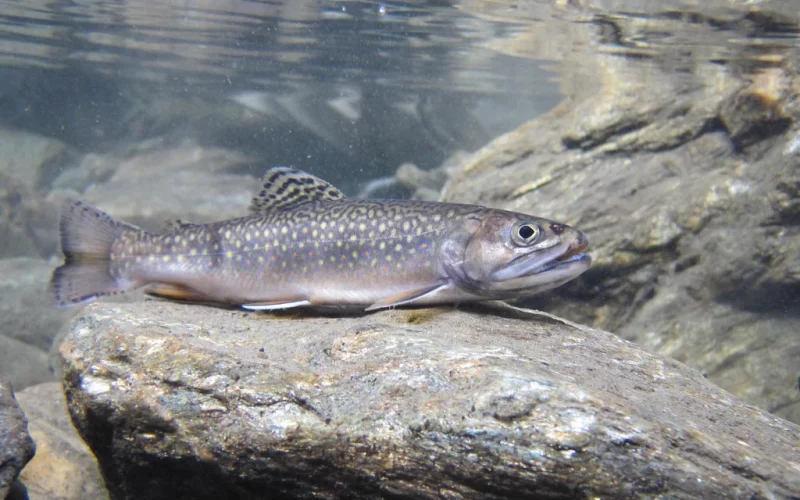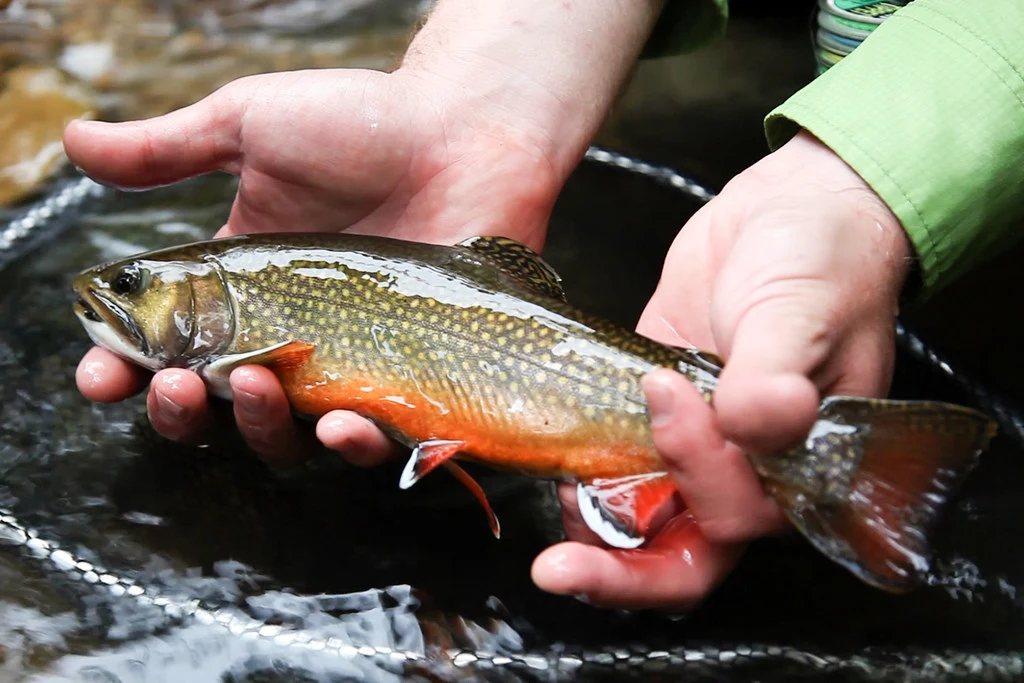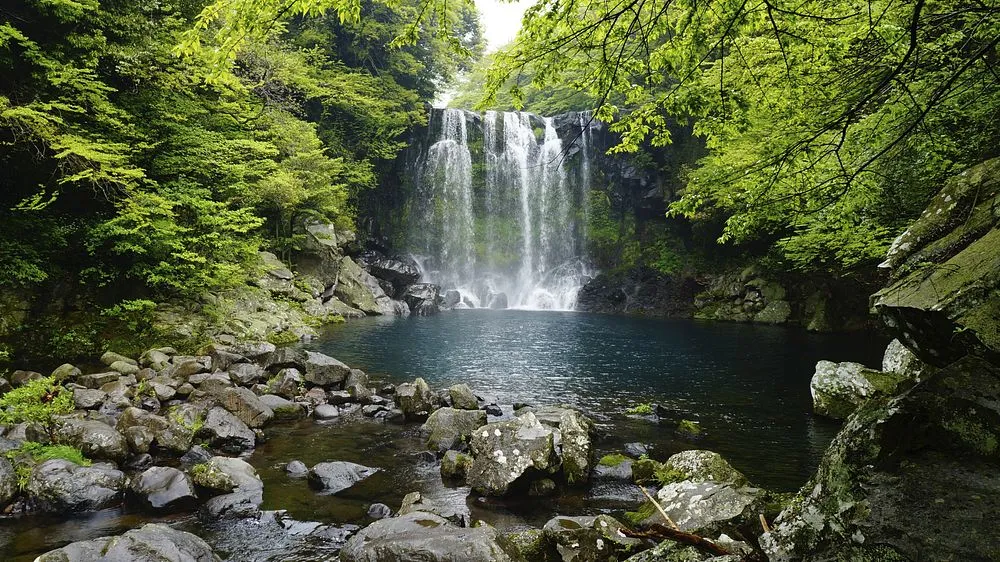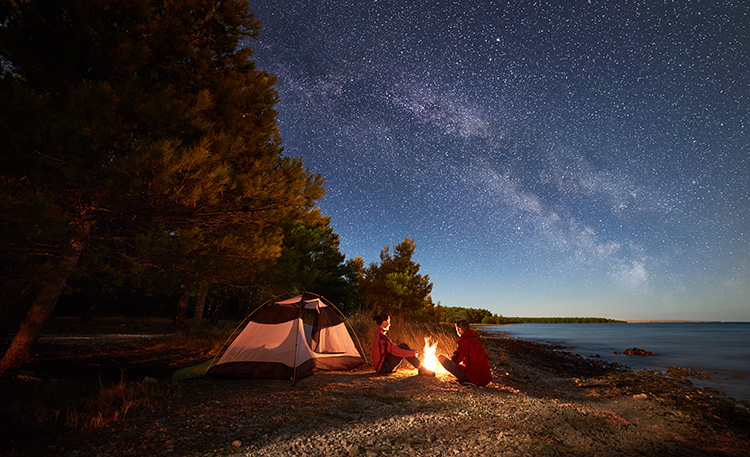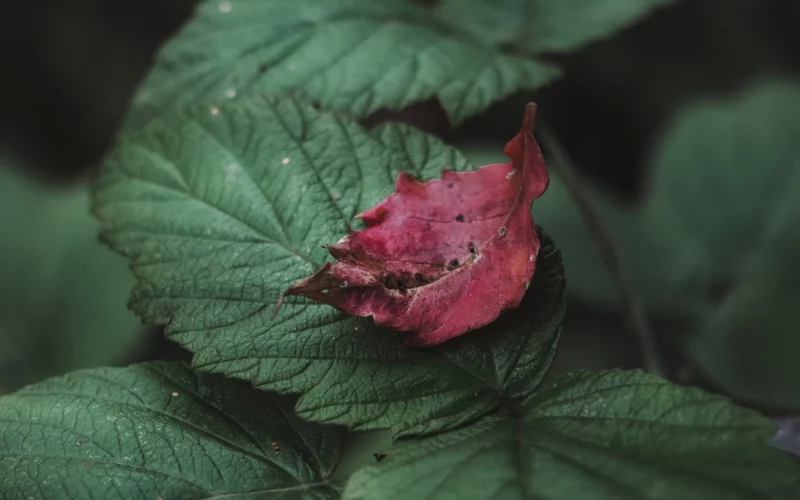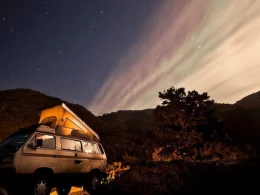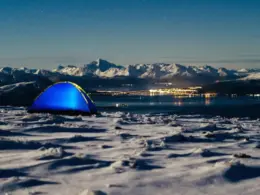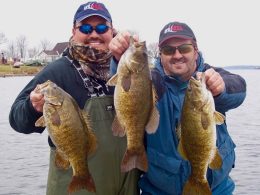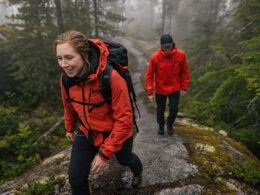Fall can be a tricky time of year to fish for brookies, especially if you live in the southern Appalachians. The water can be low, and clear which makes for spooky fish and harsh conditions.
Fret not though folks, because there is no such thing as bad or good fishing conditions, just different. So, below we’re going to show you how to land some brook trout in the fall when the water is low, and the fish just don’t seem to bite.
Table of Contents
Caution
Early in the fall, the water might still be too warm to safely fish for trout. If you find that the water temperature is 68 F or higher then you’re better off heading to a local pond or lake and trying to bass fish. This water temperature is too high to safely catch and release trout. If you plan on retaining your catch and will be following local laws then fish away!
Another note of caution is that brook trout spawn in the fall. Avoid fishing for trout sitting on their redds and if possible stay out of the water as much as you can. A redd is easily seen in clear water. The bottom of the river is going to look cleaner than the surrounding areas and will be in a spot that has small to medium pieces of gravel.
It’s best to avoid casting to these fish, especially if you’re fishing in wild or native trout waters where populations are only sustained through the fish breeding.
Clothing
Waders may or may not be needed for fall fishing. It all depends on the air temperature, water temperature, as well as personal preference. By the end of October and into November I would recommend using some, especially if you plan on being the first one out on the water on those chilly fall mornings.
You might not think of clothing as an important aspect of fishing, but when chasing brook trout it often can be the difference between landing the big one or seeing him rise and swim off.
Camouflage or dark clothing is ideal. Brook trout can be spooky fish and if you’re chasing after them in tight-quartered mountain streams then you won’t have anywhere to hide while casting. So, wearing clothes that darken your appearance can help.
The one time this rule should be broken is if you plan on fishing in an area during deer season that requires blaze orange. Even though you’re not hunting and don’t need to wear it, I would still recommend having a blaze orange hat, vest, or wearing both. Your safety comes before fishing. This just means you’ll have to be even more stealthy when approaching plunge pools or any other spot you deem to be fishy. Don’t be afraid to crawl up to a pool or cast from your knees.
Location
If the water is still low from summer then your best chances to find brook trout will be in highly oxygenated water. Look for spots that are heavily shaded, the heads of large pools beneath waterfalls, and springheads. If there is a large plunge pool beneath a good-sized waterfall then there’s a good chance you can find fish throughout that pool, and not just at the head.
If you’ve had a rainy summer or recently gotten a good rain, fish could be spread out in the river. The spots mentioned above are still good areas to try, but now you can look in more shallow water. Undercuts of banks, rock edges, riffles, and behind boulders or sunken logs are all good spots to cast to.
The time you fish is also important. Mountain streams or low-water areas are usually very clear. So, fishing in low-light conditions can be the best time to get out. The early morning or late afternoon can be a very productive time to fish. Also, rainy, or cloudy days can give you excellent cover when fishing.
Lighten Up
Dries or nymphs can work equally well this time of year. If the water is low then it would be in your best interest to downsize your rig. If you normally throw a size 12 parachute adams, then maybe move it down to a 14 or a 16. The same goes for your nymphs. Also, dropping a nymph off of the shank of your dry fly can be a very effective way of locating and catching fish. If you find that your only getting bites on the dry then you can simply cut the nymph off and vice versa.
If you’re going to lighten up your flies then you should probably lighten up your tippet too. If the water is low and clear then I wouldn’t throw anything larger than a 6X. If the water is at normal and stable conditions then a 4X or 5X will be fine.
Lightening up your rod and reel selection is essential too. The lighter rod will help you cast with more accuracy and will help you land those smaller flies more delicately on the water. It’s also more fun to feel the fight of a brook trout on a lighter rod. The most popular sizes are 1-3 wt rods and reels. However, there are some manufacturers that make a 0 or a 00 wt rod. I wouldn’t recommend purchasing one of these unless you have really read up on them first.
If you only have one rod and it’s a 5wt then don’t worry. You can still get out there and have a great day catching brook trout. Just be aware it might be a little more difficult to control and feel your smaller flies.
The length of the rod also matters. Brook trout fishing in the mountains is often done in close quarters so shorter rods are nice to have. Ideally, a 7’-8’ rod would be best. You can still get away with using a 9’ rod but you’ll need to be prepared to roll and bow arrow cast more often than not.
Outfish the Leaf Hatch
A unique aspect of fishing this time of year is all of the beautiful foliage you get to see. The downside is when it all falls into the water and you find yourself fighting for space on the water. It can be incredibly frustrating when this happens, but there are some strategies you can use to combat this.
To help punch through the leaves you can use bead head nymphs or add a split shot to your line. Since your vision will be limited you’ll want to make sure to use an indicator when fishing this way or even euro nymphing. You might not be able to even see the fish take the fly so having something that shows a strike will increase your chances of landing that trout.
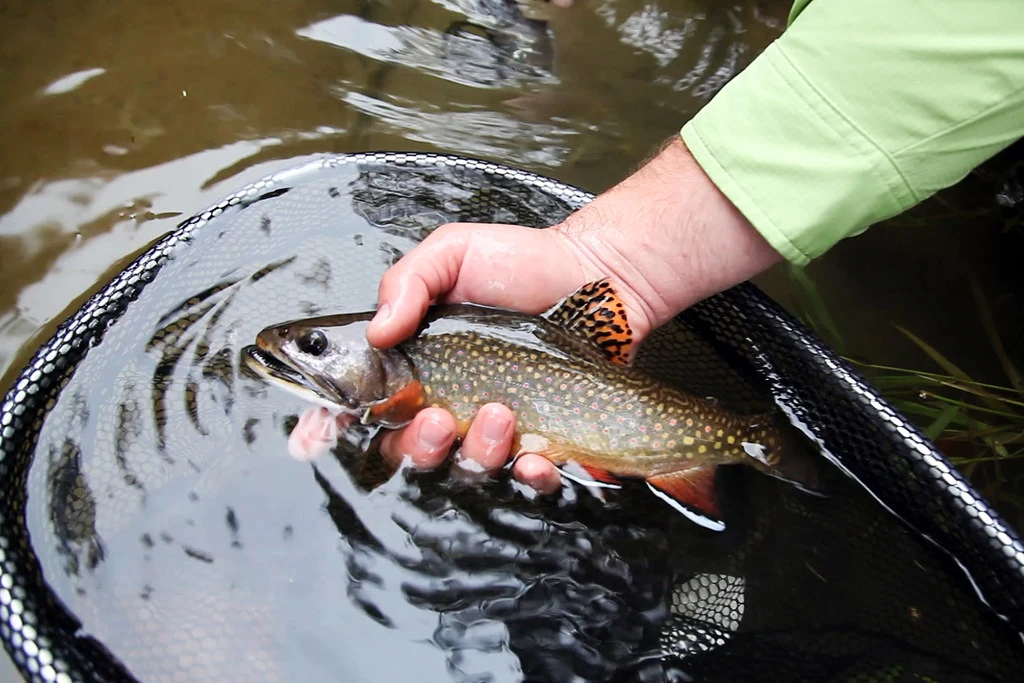
Also, streamers can be a great way to beat the leaves. They punch through the top layer and then when below the surface they’re heavy enough that you don’t need to worry about a leaf messing with your drift.
Dry flies can be used this time of year, but it can be challenging to locate water space to land your fly. Early, or late in the fall, it can be done, but there will be a couple of weeks in the middle of the season where you’ll be better off sticking with nymphs and streamers.
Fly Selection
Matching the hatch is the most important thing when choosing your flies. Call around to local fly shops, or scout the river yourself. See what’s flying in the air and don’t be afraid to reach into the river and turn a few rocks over to see what insects might be crawling around in the water. Some great flies to always keep in your fly box are
- Parachute Adams
This is a great dry fly that can match most flying insects. Spring, summer, and fall this fly will help you catch more trout. Use these in sizes 12-16. I like a bright-colored parachute like pink or neon green. These stick out amongst the leaves too.

- Elk Hair Caddis
Another great dry fly that mimics adult caddis flies or small stoneflies. The elk hair caddis can be used as a generic dry fly whenever you see insects landing on the water, but it does its best work when adult caddis flies are around. Use these in sizes 12-16.
- Bead Head Pheasant Tail
One of the most versatile flies out there. The bead head pheasant tail imitates a wide variety of aquatic insects. Making it an ideal fly to always have handy. The extra weight from the bead on its head will also help it punch through any leaves that might be floating on top of the water. Use in sizes 14-18.
- Wooly Bugger
This is a great fly to use if you want to imitate small bait fish or crawfish. The flies mentioned above will bring you more success on normal days, but if the water is high, fast, dirty, or particularly leafy that day then the bugger could be the difference between you catching fish or getting skunked.
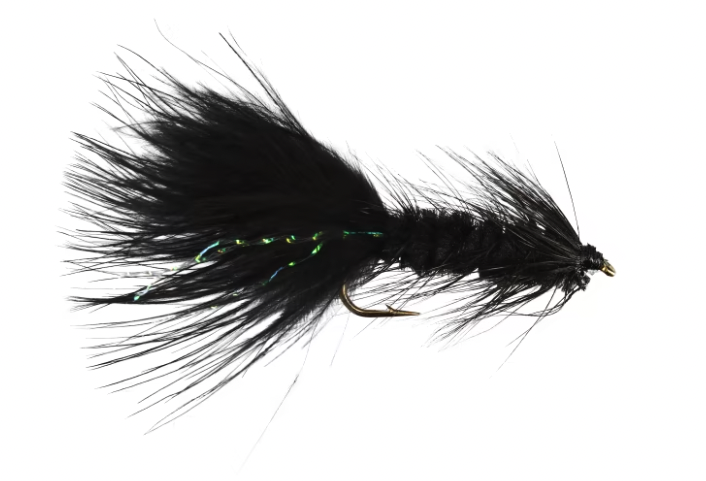
- Squirmy Worm
Not sure what to throw? Tie on a squirmy. This is a confidence fly, the one you tie on when you don’t know what to throw, or maybe the fish just aren’t biting. Put a little split show above it so that it can sink down to the bottom. Drop it off the shank of a dry fly, or use an indicator.
Conclusion
Fishing for brook trout in the fall can be one of the most productive times of the year. Pile on top of that the leaves changing, and the trout receiving their bright spawning colors. Use some of the tips above to help you the next time you’re out on the water.

